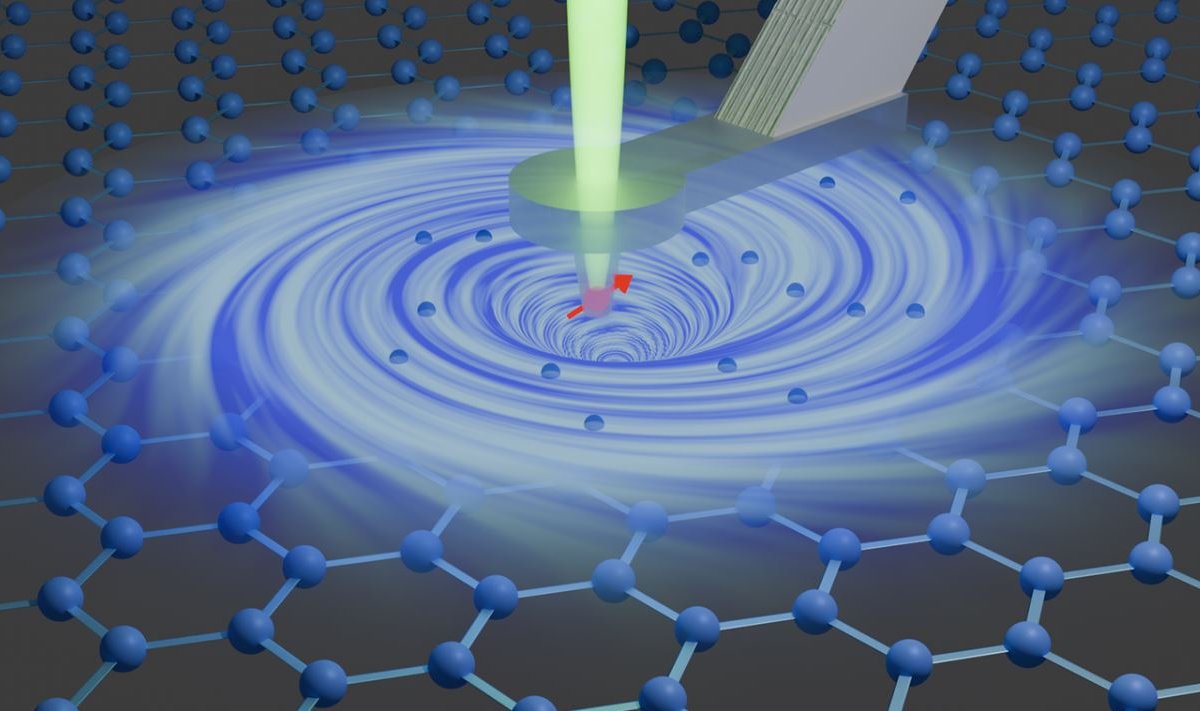A group of researchers from the Swiss Federal Institute of Technology Zurich (ETH Zurich) claim to have observed a mysterious property in graphene at room temperature for the first time. From a laboratory experiment, They managed to visualize an electron vortex in graphene, a crystalline carbon material considered quite strange by science.
Published in Science magazine The paper explains that scientists used a high-resolution magnetic field sensor to observe electron vortices in graphene. The material consists of a single layer of carbon atoms arranged in a honeycomb-like network; It can also conduct heat and electricity impressively.
When a common metal wire is used to connect a battery, the electrons in the conductor are accelerated by the electric current of the battery. In this way, electrons collide with impurity atoms and convert some of the energy into heat.
Scientists state that if graphene is used instead of metallic wire, collisions with foreign materials will almost never occur and collisions between electrons will be more noticeable. The electrons will behave like a viscous liquid in which the vortex phenomenon can occur.
“Due to the small dimensions of the diamond needle and the small distance of the graphene layer (only about 70 nanometers), we were able to make electron flows visible with a resolution of less than a hundred nanometers,” said ETH Zurich researcher and partner Marius. Palm made an official statement.
Electron vortex in graphene
Using the high-resolution magnetic sensor, scientists were able to follow the behavior of the electrons and observe the vortex. The most impressive thing is that this was made at common room temperature; Normally this reaction can be best observed at extremely low temperatures. A one-micron-wide graphene strip was used to perform the experiment.
During an experiment, The researchers noticed a characteristic sign of the vortex in graphene, namely a reversal of the direction of electron flow. In any case, it is important to emphasize that the detection of electron vortex in graphene is still only a discovery. There are still many open questions on the subject that need to be resolved.
“Thanks to our highly sensitive sensor and high spatial resolution, we do not even need to cool the graphene and can perform experiments at room temperature. Currently, electron vortex detection is basic research and there are still many open questions,” Palm concluded.
Did you like the content? So, stay updated with more news about science and technology here at TecMundo. If you want, take the opportunity to understand how graphene is a new option in the field of superconductivity.
Source: Tec Mundo
I’m Blaine Morgan, an experienced journalist and writer with over 8 years of experience in the tech industry. My expertise lies in writing about technology news and trends, covering everything from cutting-edge gadgets to emerging software developments. I’ve written for several leading publications including Gadget Onus where I am an author.













